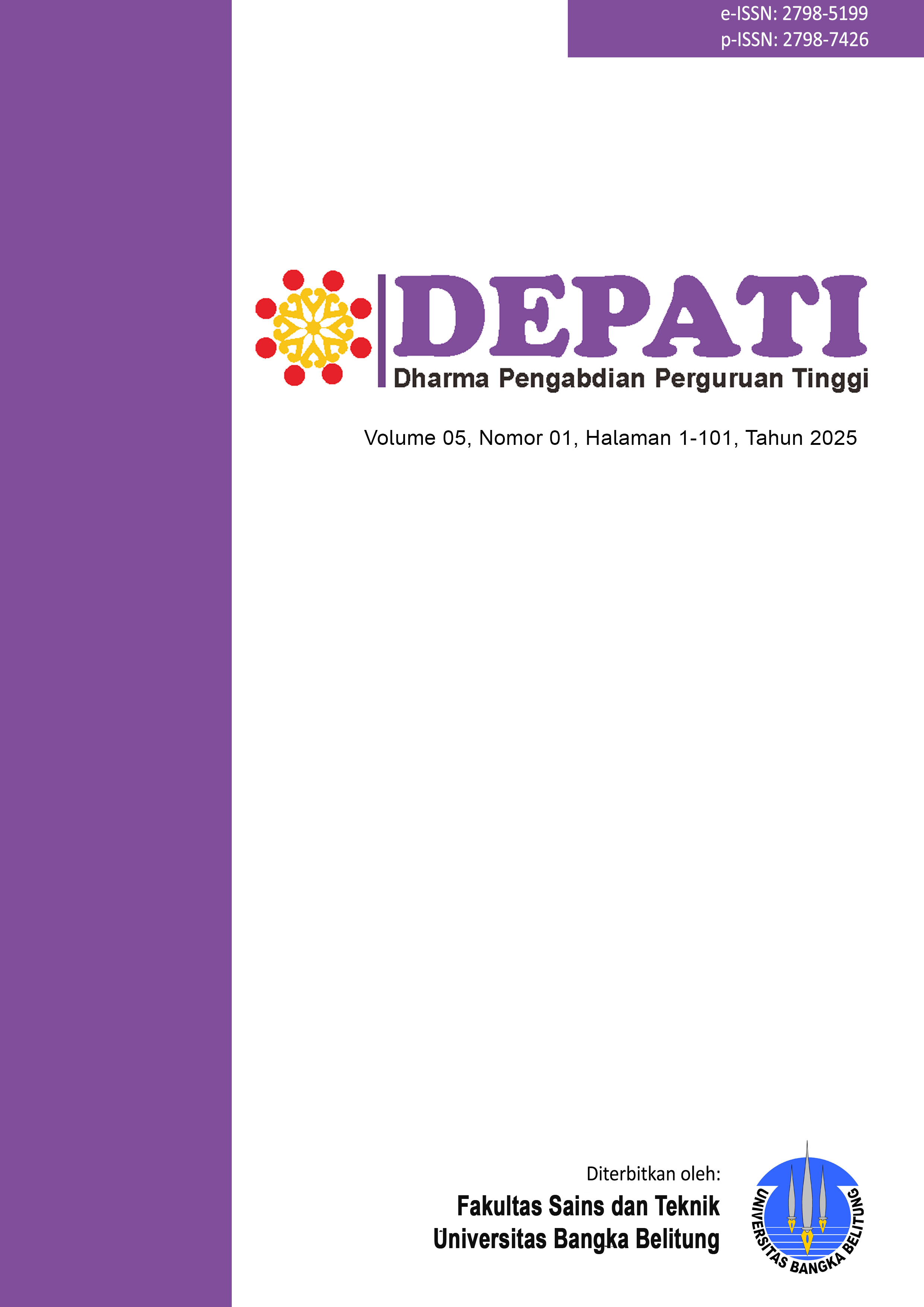BATIK WASTE FILTRATION TOOL INNOVATION: AN EFFECTIVE SOLUTION FOR ENVIRONMENTALLY FRIENDLY LIQUID WASTE MANAGEMENT
DOI:
https://doi.org/10.33019/depati.v5i1.6152Keywords:
Batik liquid waste, Waste treatment, coagulation, filtration, environmental pollutionAbstract
Batik is one of the world’s cultural heritages. Batik motifs are widely applied to various products, one of which is wood. Desa Wisata Krebet, located in Pajangan Subdistrict, Bantul Regency, Yogyakarta, is one of the producers of wooden batik in Indonesia. The production of wooden batik generates liquid waste from the dyeing process. However, this waste is not yet adequately treated and is directly discharged into the environment, potentially causing pollution. This community engagement project aimed to treat the liquid waste from wooden batik production to prevent environmental contamination, particularly soil pollution, and to ensure the discharged waste complies with applicable wastewater quality standards. The method utilized was based on the principles of coagulation and filtration. These principles were implemented in a waste treatment system consisting of tanks and filtration pipes. Several experiments were conducted to determine the optimal coagulant formulation. Modifications were also made to the filtration pipes to achieve better results. The findings demonstrated a significant reduction in BOD, COD, and TSS levels in the wastewater before and after treatment.


